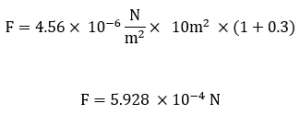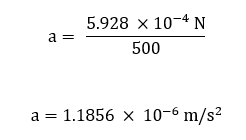
First of all, hello again! Apologies for the long break—final year kept me busy, along with my part-time work, so I didn’t have much time to post. But now that things have settled down, I’m excited to start sharing the blogs I’ve been planning. I’ll be posting regularly, starting with today’s topic.
In this blog, we’ll dive into Solar Radiation Pressure and explore how it affects satellites.
Let’s begin!
In space, even the smallest forces can have significant effects on satellites over time. One of the key forces acting on a satellite is solar radiation pressure.
What is Solar Radiation Pressure?
Solar radiation pressure is the force exerted by photons from the Sun as they strike and reflect off the surface of a satellite. While seemingly insignificant, the pressure can considerably impact a satellite’s orbit, particularly its perigee height especially over long durations.
This force depends on:
- The satellite’s distance from the Sun.
- The satellite’s cross-sectional area facing the Sun.
- The reflective properties of the satellite’s surface
In the May 1960 paper, “The Influence of the Solar Radiation Pressure on the Motion of an Artificial Satellite,” researchers focused on the Vanguard I satellite, launched into Earth orbit on 17 March 1958. This satellite, intended for geodetic measurements, was designed with a diameter of 16.5 cm and a mass of 1.47 kg. Early orbit analyses of Vanguard I revealed unexpected discrepancies between the observed and predicted perigee heights.
The researchers explored solar radiation pressure as a potential cause for these deviations. Their investigation, using analytical methods to model the effects of solar radiation pressure on satellite orbits, indicated that this pressure significantly contributed to the observed perturbations in Vanguard I’s perigee height. This finding highlighted that even though solar radiation pressure is a relatively small force, it could cause substantial orbital deviations, particularly for satellites with a high area-to-mass ratio like Vanguard I.
So, how do we calculate solar radiation pressure and its effect on a satellite’s motion? Below, we’ll walk through the key steps and formulas that help determine the instantaneous force and acceleration on a satellite caused by this pressure.
Let’s break it down:
Step 1: Calculating Solar Radiation Pressure
Solar radiation pressure at Earth’s distance from the Sun is given by the following formula:
 Where
Where
P is the solar radiation pressure.
L is the Sun’s luminosity (3.828 ×10^26 W) .
r is the distance from the Sun (Earth’s distance is 1.496 × 10^11 m )
c is the speed of light (3×10^8 m/s)
Substituting Earth’s distance into this equation gives us a solar radiation pressure at Earth:
P ≈4.56 × 10^(-6) N/m^2
This value will be used to calculate the force acting on a satellite.
Step 2: Calculating the Force on the Satellite
Once we know the solar radiation pressure, we can calculate the force on the satellite. The force depends on the satellite’s cross-sectional area (A) and its reflectivity(ρ). The formula for the force is:
![]() Where:
Where:
F is the force exerted on the satellite.
A is the satellite’s cross-sectional area in square meters.
ρ is the reflectivity coefficient (ranging from 0 for a perfectly absorbing surface to 1 for a perfectly reflective surface).
Example Calculation:
Let’s say a satellite has a cross-sectional area of 10 m² and reflects 30% of the radiation
(i.e ρ=0.3 ). The force acting on this satellite would be:
 So, the instantaneous force acting on the satellite due to solar radiation pressure is F=5.928 ×10^(-4) N
So, the instantaneous force acting on the satellite due to solar radiation pressure is F=5.928 ×10^(-4) N
Step 3: Calculating the Acceleration on the Satellite
Next, we calculate the acceleration on the satellite due to the solar radiation pressure. Acceleration is simply the force divided by the satellite’s mass ( ):
 Where:
Where:
a is the acceleration
F is the force due to solar radiation pressure.
m is the mass of the satellite in kilograms.
Example Calculation:
For a satellite with a mass of 500 kg, the acceleration would be:
 Although the force and acceleration caused by solar radiation pressure are small, they are persistent. Over time, they can lead to measurable changes in the satellite’s trajectory, especially for satellites with large area-to-mass ratios. For lightweight satellites, like CubeSats, solar radiation pressure can become a dominant factor affecting their orbits.
Although the force and acceleration caused by solar radiation pressure are small, they are persistent. Over time, they can lead to measurable changes in the satellite’s trajectory, especially for satellites with large area-to-mass ratios. For lightweight satellites, like CubeSats, solar radiation pressure can become a dominant factor affecting their orbits.
In terms of application this force can be utilised for example in solar sails the force from solar radiation pressure can be used for propulsion, enabling satellites to move without fuel.
Conclusion
Solar radiation pressure, while small, exerts a continuous force on satellites. By calculating the instantaneous force and acceleration due to this pressure, we can understand how sunlight can gradually change a satellite’s orbit.
In future blogs, we will explore how this force can affect a satellite’s orbit over time, including resonant orbits and eccentricity changes
Disclaimer: I am not a mathematician or physicist; the information presented here is sourced from various online references, which I have linked below. If you have any suggestions or feedback, feel free to reach out to me at ppadole@imperial.ac.uk ?
Source List
Comet Tails and Solar Radiation Pressure
NASA’s Explanation of Sunlight Exerting Pressure
Scientific Article on Solar Radiation Pressure
NASA Technical Report on Solar Radiation
Solar Radiation Pressure in Engineering